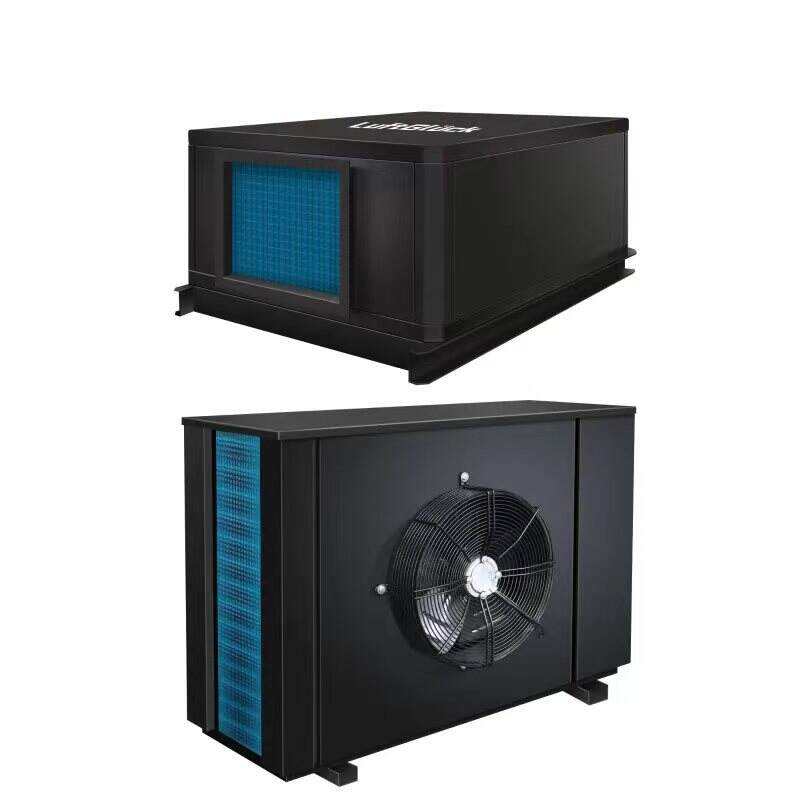Maximizing Construction Efficiency Through Moisture Control
The construction industry faces constant pressure to deliver projects on time while maintaining exceptional build quality. One often overlooked yet crucial element in achieving these goals is effective moisture management through construction dehumidifiers. These powerful tools not only speed up the building process but also ensure superior finish quality and structural integrity. Modern construction projects, from residential developments to commercial complexes, can benefit significantly from strategic dehumidification.
Understanding Moisture Challenges in Construction
Common Sources of Moisture During Construction
Construction sites are breeding grounds for excess moisture. From concrete curing and plaster drying to paint application and weather exposure, moisture infiltrates various building materials and stages of construction. Fresh concrete alone can release up to 1,000 gallons of water vapor during the curing process in a typical commercial project. Without proper moisture control, this excess humidity can lead to significant delays and quality issues.
Environmental factors also play a crucial role in moisture accumulation. Rain, snow, and high humidity levels can saturate building materials and create unfavorable conditions for construction progress. Even morning dew and ground moisture can contribute to the overall humidity challenge, making construction dehumidifier deployment essential for maintaining optimal working conditions.

Impact of Excessive Moisture on Building Materials
Uncontrolled moisture can wreak havoc on construction materials and finished surfaces. Wood warping, paint bubbling, and adhesive failure are just a few examples of moisture-related problems. These issues not only compromise the aesthetic appeal but can also affect structural integrity and lead to costly repairs or replacements.
Moreover, excess moisture creates perfect conditions for mold growth, which poses health risks to workers and future occupants while potentially damaging building materials. Early intervention with construction dehumidifiers can prevent these problems and ensure materials perform as intended.
Strategic Implementation of Dehumidification Systems
Optimal Placement and Sizing Guidelines
Effective dehumidification requires careful planning and strategic equipment placement. Large construction sites typically need multiple units positioned at key locations to ensure uniform moisture control. Factors such as room size, air circulation patterns, and specific drying requirements determine the optimal placement of construction dehumidifiers.
Professional contractors calculate the required dehumidification capacity based on space volume, target humidity levels, and material moisture content. This systematic approach ensures efficient drying while minimizing energy consumption and rental costs. Strategic positioning near moisture-sensitive areas and maintaining proper airflow patterns maximizes the effectiveness of each unit.
Monitoring and Adjustment Protocols
Successful moisture control requires continuous monitoring and adjustment of dehumidification systems. Modern construction dehumidifiers often feature built-in humidity sensors and automatic controls, allowing for precise maintenance of optimal conditions. Regular monitoring helps identify potential issues early and ensures consistent drying progress throughout the project.
Construction teams should establish clear protocols for checking humidity levels, maintaining equipment, and adjusting settings as needed. Documentation of moisture readings and system performance helps track progress and validate quality control measures.
Accelerating Project Timelines Through Effective Moisture Management
Reducing Drying Times for Various Materials
Construction dehumidifiers significantly reduce drying times for various building materials. Concrete typically requires 28 days to cure under normal conditions, but with proper dehumidification, this time can be reduced while maintaining or improving strength development. Similarly, drywall compound, paint, and other moisture-sensitive materials can dry faster without compromising quality.
By maintaining optimal humidity levels, contractors can proceed with subsequent construction phases sooner, potentially shaving weeks off project timelines. This acceleration translates to substantial cost savings and improved project efficiency without sacrificing build quality.
Scheduling Optimization Strategies
Smart deployment of construction dehumidifiers enables better project scheduling and resource allocation. Contractors can plan interior work with greater confidence, knowing that moisture-related delays are minimized. This predictability allows for more efficient scheduling of trades and better coordination of material deliveries.
Advanced planning for dehumidification needs helps prevent bottlenecks and ensures smooth project flow. Construction managers can optimize crew scheduling and material staging, reducing idle time and improving overall project efficiency.
Quality Assurance and Long-term Benefits
Preventing Moisture-Related Defects
Using construction dehumidifiers proactively prevents numerous moisture-related defects that could emerge during or after construction. From preventing efflorescence on masonry to ensuring proper adhesion of flooring materials, controlled humidity levels contribute to superior build quality. This preventive approach reduces warranty claims and post-construction remediation costs.
Quality assurance protocols incorporating moisture control help maintain high standards throughout the construction process. Regular monitoring and documentation of humidity levels provide valuable data for quality control and project documentation.
Energy Efficiency and Sustainability Advantages
Modern construction dehumidifiers contribute to building sustainability in multiple ways. Proper moisture control during construction can improve the long-term energy efficiency of buildings by ensuring insulation materials perform optimally. Additionally, preventing moisture-related issues reduces the need for future repairs and replacements, lowering the building's lifetime environmental impact.
Energy-efficient dehumidification systems help minimize the carbon footprint of construction projects while delivering superior results. This alignment with green building practices can contribute to certification requirements and demonstrate commitment to sustainable construction methods.
Frequently Asked Questions
What capacity construction dehumidifier do I need for my project?
The required capacity depends on several factors including space volume, ambient conditions, and specific drying needs. A general rule of thumb is to calculate 17-20 pints per 1,000 square feet for normal conditions. However, professional assessment is recommended for optimal sizing based on your specific project requirements.
How long should dehumidifiers run during construction?
Construction dehumidifiers typically need to run continuously until target moisture levels are achieved. This can range from several days to weeks depending on material types, environmental conditions, and project specifics. Regular moisture monitoring helps determine the necessary duration.
What are the optimal humidity levels for construction?
Most construction materials perform best when relative humidity is maintained between 40-60%. However, specific materials may require different levels. For example, wood flooring installation typically requires 35-55% relative humidity, while concrete curing benefits from slightly higher levels initially.
